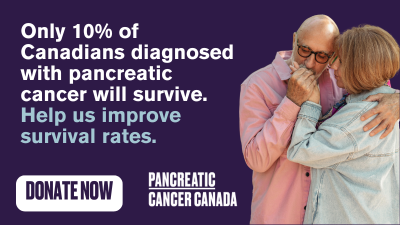How does this medication work? What will it do for me?
Aminolevulinic acid belongs to a group of medications called photodynamic therapy photosensitizers. It is used in combination with light therapy (blue light) to treat actinic keratoses (rough, scaly patches of skin from years of exposure to the sun) of the face and scalp. When aminolevulinic acid is applied to the skin or scalp, the medication builds up in the cells, which then make the cells sensitive to light. When these cells are exposed to blue light, the cells are destroyed.
Your doctor may have suggested this medication for conditions other than those listed in these drug information articles. If you have not discussed this with your doctor or are not sure why you are using this medication, speak to your doctor. Do not stop using this medication without consulting your doctor.
Do not give this medication to anyone else, even if they have the same symptoms as you do. It can be harmful for people to use this medication if their doctor has not prescribed it.
What form(s) does this medication come in?
Each applicator consists of a plastic tube containing two sealed glass ampules and an applicator tip. The tube is covered with a protective cardboard sleeve. One ampule contains 1.5 mL of solution vehicle which contains alcohol, water, lareth-4, isopropyl alcohol, and polyethylene glycol. The other ampule contains aminolevulinic acid 354 mg. The applicator is a two-component system in which the topical solution is admixed to produce a 20% solution just prior to use.
How should I use this medication?
This medication should be applied by a health care professional who has experience with this product.
This medication is used in 2 steps. In the first step, your doctor or qualified health care professional will apply aminolevulinic acid directly to the actinic keratoses lesions on your face and scalp. You will then go home and return to the doctor's office 14 to 18 hours after the application of the medication. During this time, while your skin is absorbing the medication, you should keep the affected areas dry and out of direct bright light. That means avoiding sunlight, examination lamps, and unshaded light bulbs at close distances. Before going outside in bright sunlight, you should cover up by wearing a wide-brimmed hat.
In the second step, you return to the doctor's office 14 to 18 hours later. Your health care professional will rinse the actinic keratoses lesions with water and then perform light therapy by applying blue light to the areas where the aminolevulinic acid was applied. You will wear protective goggles during the blue light treatment.
Many things can affect the dose of a medication that a person needs, such as body weight, other medical conditions, and other medications. If your doctor has recommended a dose different from the ones listed here, do not change the way that you are using the medication without consulting your doctor.
It is important that this medication be used exactly as recommended by your doctor. If you miss an appointment to receive blue light treatment after having applied aminolevulinic acid, you should continue to avoid exposing the affected areas to sunlight or excessive bright light for at least 40 hours. Contact your doctor as soon as possible.
This medication is stored at room temperature.
Do not dispose of medications in wastewater (e.g. down the sink or in the toilet) or in household garbage. Ask your pharmacist how to dispose of medications that are no longer needed or have expired.
Who should NOT take this medication?
Do not use aminolevulinic acid if you:
- are allergic to aminolevulinic acid, porphyrins, or any ingredients of the medication
- have porphyria (a group of conditions that result in the accumulation of porphyrins)
What side effects are possible with this medication?
Many medications can cause side effects. A side effect is an unwanted response to a medication when it is used in normal doses. Side effects can be mild or severe, temporary or permanent.
The side effects listed below are not experienced by everyone who uses this medication. If you are concerned about side effects, discuss the risks and benefits of this medication with your doctor.
The following side effects have been reported by at least 1% of people using this medication. Many of these side effects can be managed, and some may go away on their own over time.
Contact your doctor if you experience these side effects and they are severe or bothersome. Your pharmacist may be able to advise you on managing side effects.
- crusting
- headache
- irritated eyes
- itching
- pain or tenderness
- peeling
- redness
- scaling
- stinging, tingling, or burning
- swelling
Although most of the side effects listed below don't happen very often, they could lead to serious problems if you do not seek medical attention.
Check with your doctor as soon as possible if any of the following side effects occur:
- blisters
- confusion
- memory problems
- skin bleeding
- skin colour changes
- skin ulcers
Some people may experience side effects other than those listed. Check with your doctor if you notice any symptom that worries you while you are using this medication.
Are there any other precautions or warnings for this medication?
Before you begin using a medication, be sure to inform your doctor of any medical conditions or allergies you may have, any medications you are taking, whether you are pregnant or breast-feeding, and any other significant facts about your health. These factors may affect how you should use this medication.
Amnesia: There have been reported cases where people using aminolevulinic acid with light therapy have experienced memory problems. Let your doctor know if you experience any memory problems, confusion, or disorientation.
Application: Because this medication contains alcohol, it should not be applied to the eyes or mouth.
Drowsiness/reduced alertness: Aminolevulinic acid may affect the mental or physical abilities needed to drive or operate machinery. Avoid driving, operating machinery, or performing other hazardous tasks until you have determined how this medication affects you.
Sensitivity to light: Between the time aminolevulinic acid has been applied to the skin and blue light treatment, your affected areas of skin will become more sensitive to light. During this time, you should avoid exposing the areas where the medication was applied to sunlight or any bright indoor light (e.g., examination lamps, unshaded light bulbs) at close distances.
Exposure to light might cause burning or stinging and cause redness and swelling of the affected areas. Before going outside, wear protective clothing. Sunscreens with ultraviolet protection will not protect against this type of light sensitivity.
Pregnancy: This medication should not be used during pregnancy unless the benefits outweigh the risks. If you become pregnant while using this medication, contact your doctor immediately.
Breast-feeding: It is not known if aminolevulinic acid passes into breast milk. If you are breast-feeding and are using this medication, it may affect your baby. Talk to your doctor about whether you should continue breast-feeding.
Children: The safety and effectiveness of using this medication have not been established for children and adolescents less than 18 years old.
What other drugs could interact with this medication?
There may be an interaction between aminolevulinic acid and any of the following:
- acitretin
- adapalene
- alitretinoin
- amiodarone
- first generation anti-psychotics (e.g., chlorpromazine, methotrimeprazine)
- benzoyl peroxide
- bicalutamide
- diuretics (e.g., chlorthalidone, furosemide, hydrochlorothiazide)
- fenofibrate
- isotretinoin
- methotrexate
- nonsteroidal anti-inflammatory drugs (e.g., ibuprofen, meloxicam, naproxen)
- pirfenidone
- protein kinase inhibitors (e.g., afatinib, dabrafenib)
- quinolone antibiotics (e.g., ciprofloxacin, levofloxacin)
- St. John's wort
- sulfamethoxazole
- sulfonylureas (e.g., gliclazide, glimepiride, glyburide)
- tetracyclines (e.g., doxycycline, minocycline, tetracycline)
- tretinoin
- vitamin D (topical)
If you are taking any of these medications, speak with your doctor or pharmacist. Depending on your specific circumstances, your doctor may want you to:
- stop taking one of the medications,
- change one of the medications to another,
- change how you are taking one or both of the medications, or
- leave everything as is.
An interaction between two medications does not always mean that you must stop taking one of them. Speak to your doctor about how any drug interactions are being managed or should be managed.
Medications other than those listed above may interact with this medication. Tell your doctor or prescriber about all prescription, over-the-counter (non-prescription), and herbal medications you are taking. Also tell them about any supplements you take. Since caffeine, alcohol, the nicotine from cigarettes, or street drugs can affect the action of many medications, you should let your prescriber know if you use them.
All material copyright MediResource Inc. 1996 – 2024. Terms and conditions of use. The contents herein are for informational purposes only. Always seek the advice of your physician or other qualified health provider with any questions you may have regarding a medical condition. Source: www.medbroadcast.com/drug/getdrug/Levulan-Kerastick



